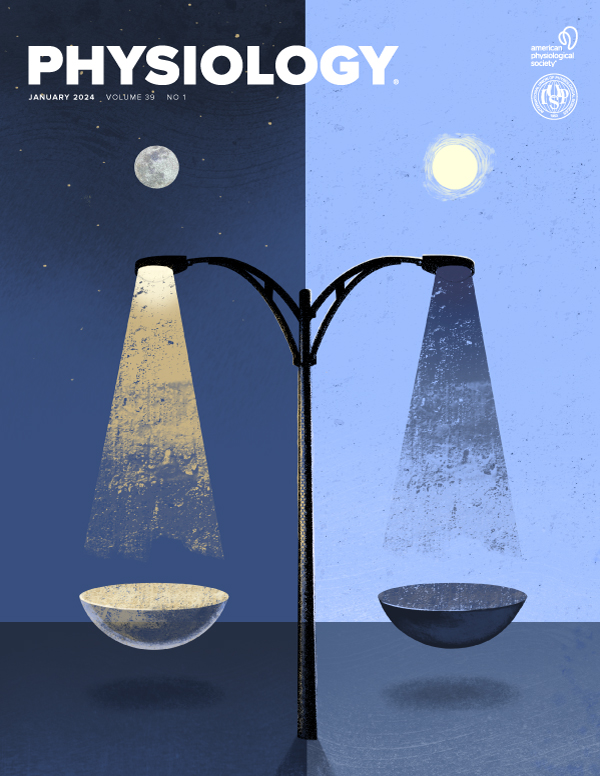Role of scleraxis in angiotensin II-induced cardiac fibrosis
IF 5.3
2区 医学
Q1 PHYSIOLOGY
引用次数: 0
Abstract
Cardiac fibrosis involves the activation and conversion of fibroblasts to myofibroblasts in response to pathophysiological stresses, resulting in structural and functional remodeling of the heart leading to heart failure and death. Although it affects millions of people worldwide, currently no medications are available against cardiac fibrosis. Similar to the pro-fibrotic growth factor TGF-β, angiotensin II (AngII) contributes to cardiac fibrosis, however AngII inhibitors are not used against fibrosis despite growing evidence of efficacy. AngII induces the nuclear translocation of Myocardin Related Transcription Factor-A (MRTF-A) which acts with Serum Response Factor (SRF) to play a major role in the conversion of fibroblasts to myofibroblasts, similar to the transcription factor scleraxis. Scleraxis has been shown by our lab to induce fibrosis by transactivating various pro-fibrotic gene promoters. Here we investigated whether AngII works through an MRTF-A/SRF/scleraxis pathway to induce cardiac fibrosis. AngII delivery (1mg/kg/day for 28 days) through osmotic mini-pumps in C57Bl/6 mice significantly increased blood pressure (systolic, diastolic, and mean) and cardiac hypertrophy compared to saline control group. In the AngII group, cardiac fibrosis was observed with enhanced mRNA expression of pro-fibrotic genes, Col1a1, Col3a1, periostin, and EDA-fibronectin. Interestingly there was a significant increase in scleraxis as well, suggesting its involvement in AngII-mediated fibrosis. Our in vitro studies of rat cardiac fibroblasts treated with AngII showed a significant increase in scleraxis mRNA and protein expression, and scleraxis knockdown significantly attenuated AngII-induced collagen expression, confirming a requirement for scleraxis in the AngII-mediated fibrosis pathway. NIH3T3 cells transfected with MRTF-A and SRF together showed a high level of induction of scleraxis expression. Luciferase assays in both COS7 and NIH3T3 cells showed that MRTF-A and SRF act together to regulate scleraxis expression by binding to and transactivating the scleraxis promoter, indicating that AngII activates a MRTF-A/SRF/scleraxis pathway for inducing cardiac fibrosis, therefore targeting scleraxis may be an effective anti-fibrotic strategy. Canadian Institutes of Health Research Project Grant This is the full abstract presented at the American Physiology Summit 2023 meeting and is only available in HTML format. There are no additional versions or additional content available for this abstract. Physiology was not involved in the peer review process.硬化在血管紧张素ii诱导的心脏纤维化中的作用
心脏纤维化涉及成纤维细胞在病理生理应激下的活化和向肌成纤维细胞的转化,导致心脏的结构和功能重塑,导致心力衰竭和死亡。尽管它影响着全世界数百万人,但目前还没有针对心脏纤维化的药物。与促纤维化生长因子TGF-β类似,血管紧张素II (AngII)有助于心脏纤维化,然而尽管越来越多的证据表明AngII抑制剂有效,但并未用于治疗纤维化。AngII诱导心肌素相关转录因子- a (MRTF-A)的核易位,MRTF-A与血清反应因子(SRF)共同作用,在成纤维细胞向肌成纤维细胞的转化中发挥重要作用,类似于转录因子硬化。我们的实验室已经证明,sccleraxis通过激活各种促纤维化基因启动子来诱导纤维化。在这里,我们研究了AngII是否通过MRTF-A/SRF/scleraxis途径诱导心脏纤维化。与生理盐水对照组相比,通过渗透微型泵给C57Bl/6小鼠AngII (1mg/kg/天,连续28天)显著增加血压(收缩压、舒张压和平均血压)和心脏肥厚。AngII组心肌纤维化,促纤维化基因Col1a1、Col3a1、骨膜蛋白和eda -纤维连接蛋白mRNA表达增强。有趣的是,硬化也显著增加,提示其参与血管介导的纤维化。我们对AngII处理的大鼠心脏成纤维细胞的体外研究显示,硬化轴mRNA和蛋白质表达显著增加,而硬化轴敲低显著减弱了血管内皮诱导的胶原表达,证实了血管内皮介导的纤维化途径中需要硬化轴。同时转染MRTF-A和SRF的NIH3T3细胞显示高水平诱导硬化表达。在COS7和NIH3T3细胞中的荧光素酶检测显示,MRTF-A和SRF通过结合和反激活硬化轴启动子共同作用调节硬化轴的表达,表明AngII激活MRTF-A/SRF/硬化轴通路诱导心脏纤维化,因此靶向硬化轴可能是一种有效的抗纤维化策略。这是在2023年美国生理学峰会会议上发表的全文摘要,仅以HTML格式提供。此摘要没有附加版本或附加内容。生理学没有参与同行评议过程。
本文章由计算机程序翻译,如有差异,请以英文原文为准。
求助全文
约1分钟内获得全文
求助全文
来源期刊

Physiology
医学-生理学
CiteScore
14.50
自引率
0.00%
发文量
37
期刊介绍:
Physiology journal features meticulously crafted review articles penned by esteemed leaders in their respective fields. These articles undergo rigorous peer review and showcase the forefront of cutting-edge advances across various domains of physiology. Our Editorial Board, comprised of distinguished leaders in the broad spectrum of physiology, convenes annually to deliberate and recommend pioneering topics for review articles, as well as select the most suitable scientists to author these articles. Join us in exploring the forefront of physiological research and innovation.
 求助内容:
求助内容: 应助结果提醒方式:
应助结果提醒方式:


